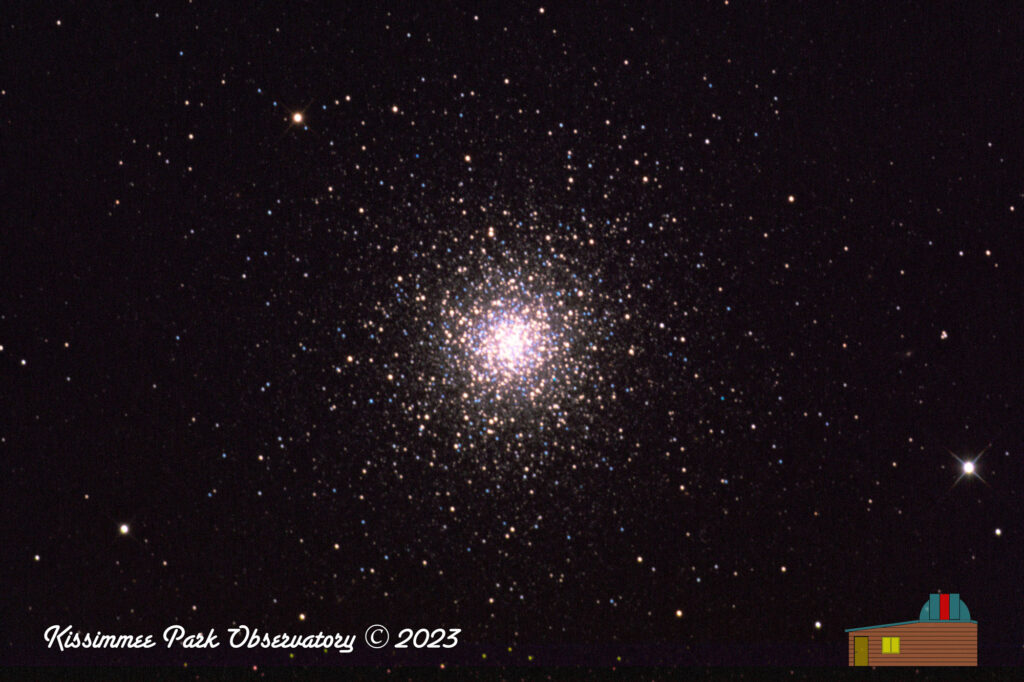The globular cluster known as Messier 3 or M3 is one of the most impressive and fascinating objects in the night sky. Located in the constellation of Canes Venatici, M3 was first discovered by Charles Messier in 1764 and has been a favorite among astronomers ever since.
M3 is a densely packed cluster of stars, with over 500,000 stars contained within a radius of just 90 light-years. This cluster is located approximately 33,900 light-years away from Earth and is one of the largest and brightest globular clusters in the northern hemisphere.
One of the most interesting features of M3 is the presence of blue straggler stars, which are clearly shown in the image. These stars are unusual because they appear to be younger than the cluster itself. It’s believed that these stars are formed through interactions between pairs of stars, where one star steals material from its companion, resulting in a rejuvenated star.
M3 has been studied extensively by astronomers using a variety of instruments, including the Hubble Space Telescope. These observations have provided valuable information about the structure and dynamics of the cluster, as well as general insights into the formation and evolution of globular clusters.
The bright star in the lower right hand of the frame is an 8th magnitude double star cataloged as HD 119391.
This is a dramatic improvement over my last image of this object, taken in 2019. New telescope, new mount, new imaging equipment, and a technological leap forward really makes a difference.
Click on the image for a larger version you can explore.
Image Info
This is the second imaging run with the RC-12 Astrograph, and is a normal LRGB image. I kept the individual subframe exposures short (120s) to prevent burn-in of the core.
Interestingly enough, this imaging run occurred with an 11-day-old moon in the sky about 45 degrees away from M3. It didn’t seem to affect the background brightness much, and could be entirely processed out. Note to self: you can image globulars and open clusters in LRGB with a largish moon in the sky.
- Imaged from KPO, in Saint Cloud, Florida. Bortle 6.
- Main Camera: ZWO ASI1600MM Pro
- Main Scope: Orion RC-12 Ritchey-Chretien Astrograph, 2450mm FL, f/8
- Guide Scope: Orion 120mm Refractor, 600mm FL, f/5
- Guide Camera: ZWO ASI120MM-S
- Mount: iOptron CEM-120
- Red: 12 subframes of 120s = 24 min integration
- Green: 12 subframes of 120s = 24 min integration
- Blue: 12 subframes of 120s = 24 min integration
- Luminance:12 subframes of 120s = 24 min integration
- Total integration time: 96 min = 1.6 hours.
- Capture and Optical tracking via ASIAir Pro automation
- Separate channels stacked and LRGB integrated in Astro Pixel Processor, and processing for light pollution sky fog removal
- Image cropped, stretched, and noise processed in Nebulosity.
- Final processing in Aperture

